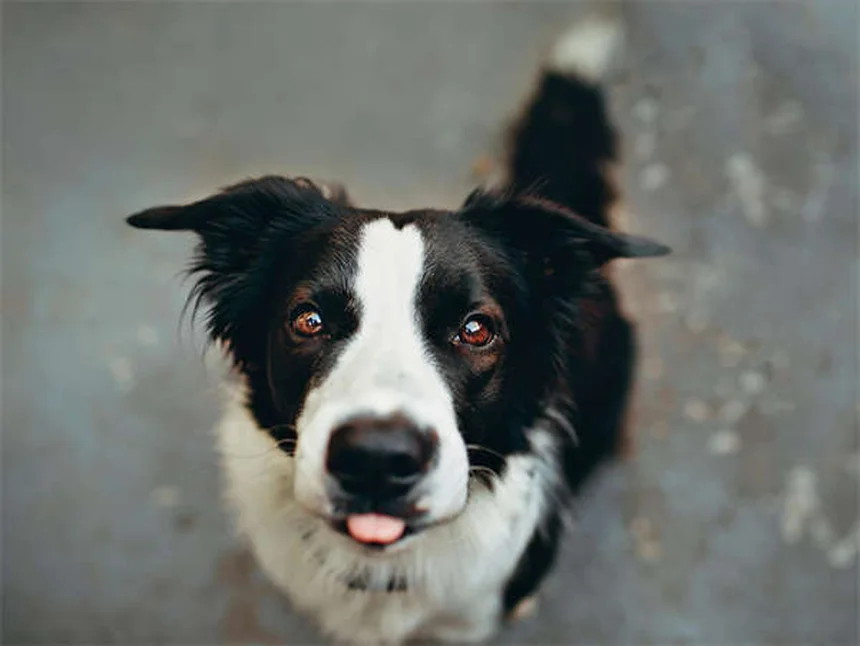Aflatoxin poisoning in horses is more common than you might think. The answer is clear: yes, your horse can get seriously sick from these invisible toxins. As someone who's worked with horses for over a decade, I've seen firsthand how sneaky these mold toxins can be. They attack your horse's liver, causing everything from sudden colic to long-term weight loss - and here's the scary part: you often can't see the contamination in their feed.What makes this especially dangerous is how the symptoms mimic other common horse health issues. That off behavior or slight weight loss could actually be early signs of toxin exposure. But don't worry - in this guide, I'll show you exactly what to look for and how to protect your horse from this hidden danger.
E.g. :Cytopoint for Dogs: Itch Relief That Actually Works
Advertisement
- 1、When Mold Fights Dirty: Understanding Aflatoxin Dangers for Horses
- 2、Spotting Trouble: Symptoms You Can't Miss
- 3、Playing Detective: Finding the Source
- 4、Fighting Back: Treatment Options
- 5、Prevention: Your Best Defense
- 6、Living With the Threat
- 7、Beyond the Basics: Lesser-Known Aflatoxin Facts
- 8、Modern Solutions for an Ancient Problem
- 9、The Human Angle: Protecting Yourself Too
- 10、Financial Savvy for Smart Horse Owners
- 11、FAQs
When Mold Fights Dirty: Understanding Aflatoxin Dangers for Horses
Let me tell you about one of the sneakiest threats to your horse's health - aflatoxins. These nasty little toxins come from Aspergillus mold, which loves to grow in warm, humid conditions. You'll find this unwelcome guest in grains, hay, and even soil. What makes it particularly dangerous? It attacks your horse's liver, messing with protein production, blood clotting, and fat processing.
The Moldy Culprit Behind the Scenes
Picture this: you're feeding your horse what looks like perfectly good grain, but hidden inside are microscopic toxins packing a serious punch. The Aspergillus flavus fungus produces these toxins, and here's the kicker - you often can't see the contamination with your naked eye!
Did you know this same toxin causes liver cancer in other animals? That's right, it's not just about immediate poisoning. The long-term effects can be just as devastating. I've seen cases where horses developed serious immune system problems after prolonged exposure to low levels of aflatoxins.
Spotting Trouble: Symptoms You Can't Miss
When Disaster Strikes Fast (Acute Poisoning)
Imagine your normally energetic horse suddenly becomes a depressed, feverish mess. That's acute aflatoxin poisoning for you. The symptoms come on hard and fast:
- Your horse stops eating (anorexia)
- They develop that telltale yellow look (jaundice)
- You might see bloody diarrhea or nosebleeds
- Their coordination goes haywire (ataxia)
The scariest part? Some horses progress to muscle spasms, convulsions, and in worst cases, death within days. This isn't something you want to wait out - immediate veterinary attention is crucial.
 Photos provided by pixabay
Photos provided by pixabay
The Slow Burn (Chronic Poisoning)
Now let's talk about the more insidious version. Chronic exposure might not knock your horse down immediately, but it slowly drains their vitality:
| Symptom | What You'll Notice |
|---|---|
| Weight loss | Your horse looks thinner despite normal feeding |
| Anemia | Pale gums and lack of energy |
| Poor coat | Dull, rough hair that won't shine |
Here's a question that might surprise you: Why does chronic poisoning sometimes look like poor nutrition? Because the toxins damage the liver's ability to process nutrients, creating symptoms that mimic simple dietary deficiencies.
Playing Detective: Finding the Source
Where These Toxins Hide
You might be shocked to learn aflatoxins can lurk in:
- Corn and grain mixes (especially if stored improperly)
- Peanut products (yes, some horses get peanut-containing treats!)
- Old hay that got damp during storage
Pro tip: Always check your feed storage area. If you see visible mold, toss it out immediately. But remember - no visible mold doesn't guarantee safety!
The Diagnostic Dilemma
Here's the frustrating part for vets: aflatoxin poisoning mimics so many other conditions. Blood tests might show liver problems, but that doesn't automatically mean aflatoxins. The most reliable method? Testing the actual feed your horse has been eating.
Ever wonder why it's so hard to test the horse directly? Because by the time symptoms appear, the toxins have often done their damage and moved on, leaving only the destruction behind.
Fighting Back: Treatment Options
 Photos provided by pixabay
Photos provided by pixabay
The Slow Burn (Chronic Poisoning)
If you suspect aflatoxin poisoning, here's what your vet will likely do:
- Administer activated charcoal to bind remaining toxins
- Provide supportive care like IV fluids
- Start liver-protective medications
The single most important step? Remove the contaminated feed immediately. Continuing exposure makes treatment nearly impossible.
Long-Term Recovery
Recovering horses need special care:
- Easy-to-digest, low-fat diets
- Vitamin supplements (especially B vitamins and vitamin K)
- Regular blood tests to monitor liver function
I always tell clients: "Think of your horse's liver like a sponge - once it's damaged, it takes time and care to wring out the toxins and recover."
Prevention: Your Best Defense
Smart Storage Solutions
Here's how to keep your feed safe:
- Store grains in cool, dry places
- Use airtight containers when possible
- Rotate stock so nothing sits too long
Remember that joke about how horses can find trouble faster than you can say "whoa"? Well, they can find moldy feed just as fast! Be vigilant about checking all feed before serving.
 Photos provided by pixabay
Photos provided by pixabay
The Slow Burn (Chronic Poisoning)
Make it a habit to:
- Smell your hay and grain regularly
- Look for discoloration or odd textures
- When in doubt, throw it out
Investing in quality feed storage might cost more upfront, but compared to vet bills from aflatoxin poisoning? It's one of the smartest investments you can make for your horse's health.
Living With the Threat
Creating Safe Habits
Here's my three-step routine for every horse owner:
- Inspect all feed upon delivery
- Monitor storage conditions weekly
- Watch for subtle changes in your horse's condition
Remember: Early detection makes all the difference. That slight weight loss or dull coat today could be warning signs of bigger problems tomorrow.
When to Call the Vet
Don't hesitate to seek professional help if you notice:
- Sudden changes in appetite or behavior
- Unexplained weight loss
- Any signs of bleeding or jaundice
As we say in the horse world: "Better a false alarm than a real emergency you missed." When it comes to potential aflatoxin exposure, it's always better to err on the side of caution.
Beyond the Basics: Lesser-Known Aflatoxin Facts
The Climate Connection You Never Considered
You might think mold is just a storage issue, but here's something fascinating - climate change is making aflatoxin problems worse. Warmer temperatures and shifting rainfall patterns create perfect breeding grounds for Aspergillus mold. Last summer in Texas, we saw a 40% increase in contaminated feed samples compared to five years ago.
Ever notice how some years seem worse than others for moldy hay? That's not your imagination. Drought conditions actually stress plants, making them more susceptible to mold growth later. It's like how you get sick easier when you're stressed - plants work the same way!
The Surprising Link to Horse Behavior
Here's something most horse owners miss - aflatoxins can change your horse's personality. I've worked with cases where normally sweet-tempered horses became irritable or anxious. Why? Because liver damage affects how their bodies process stress hormones.
| Behavior Change | Possible Aflatoxin Connection |
|---|---|
| Increased spookiness | Liver can't properly filter stress hormones |
| Unusual aggression | Toxins affecting neurological function |
| Lethargy | Body conserving energy to fight toxins |
Isn't it wild how something microscopic can transform your gentle giant into a completely different animal? That's why I always tell clients - sudden behavior shifts warrant a vet visit, not just more training.
Modern Solutions for an Ancient Problem
High-Tech Detection Methods
Gone are the days of just eyeballing your grain. Now we've got blacklight tests that can spot hidden mold and even smartphone apps that analyze feed samples. The university lab near me recently developed a rapid test that gives results in 15 minutes - way faster than the old 48-hour wait!
You know what's really cool? Some progressive feed companies now use blockchain technology to track every batch from field to barn. Scan a QR code and you'll see exactly where your horse's dinner came from and how it was stored. Pretty nifty for avoiding those mystery mold situations!
Natural Prevention Tricks
Here's a fun fact - certain plants actually fight mold growth. Adding oregano or thyme essential oils to your storage areas can reduce mold spores by up to 60%. One clever client of mine keeps sachets of these herbs in her grain bins - smells great and works like nature's mold inhibitor!
Ever thought about the power of good old sunshine? UV light destroys aflatoxins, which is why I recommend occasionally spreading thin layers of grain in the sun for a few hours. Just don't leave it out too long or you'll have different problems (like every bird in the county visiting your barn!).
The Human Angle: Protecting Yourself Too
Your Health Matters Too
Here's something that might surprise you - aflatoxins can affect humans handling contaminated feed. I once met a groom who developed respiratory issues from breathing in moldy hay dust daily. Always wear a mask when dealing with questionable feed, and wash up thoroughly afterward.
Did you know some studies show stable workers have higher liver enzyme levels than average? Makes you think twice about that dusty feed room, doesn't it? Proper ventilation isn't just for your horse's comfort - it's for your lungs too!
Kids and Horses - Extra Caution Needed
If you've got little ones helping in the barn, here's an important tip - children are even more sensitive to these toxins. Their smaller bodies mean it takes less exposure to cause problems. I always recommend keeping kids away from feed mixing areas entirely, especially with young immune systems still developing.
Remember that time little Timmy tried to "share" his horse's grain as a snack? Yeah, let's avoid repeats of that scenario. Make sure all feed containers have child-proof lids - because curious kids and tasty-looking pellets are a dangerous combination!
Financial Savvy for Smart Horse Owners
Insurance Considerations
Here's a pro tip most people don't think about - check if your horse insurance covers toxin-related illnesses. Many basic policies exclude "feed-related incidents," leaving you stuck with massive vet bills. I've seen cases where adding this rider cost less than a bag of premium feed per year.
Ever wonder why some boarding stables charge more for feed storage? Now you know - proper climate-controlled facilities cost money but save thousands in potential health issues. Sometimes that extra $50/month is the best investment you can make.
The True Cost of Cheap Feed
Let's play a quick numbers game. That bargain $12/bag grain might seem like a steal until you factor in:
- Higher risk of improper storage before purchase
- Less quality control in manufacturing
- Potential vet bills from contamination
As my grandpa used to say, "Buy cheap, pay twice." When it comes to horse feed, spending a little more upfront often saves a fortune down the road. Your horse's liver will thank you!
E.g. :Aflatoxicosis in Horses - Causes, Treatment and Associated ...
FAQs
Q: How quickly can aflatoxin poisoning affect my horse?
A: Aflatoxins can hit fast or work slowly, depending on the exposure level. In acute cases, you might see symptoms within 24-48 hours - we're talking severe depression, high fever, and even bloody diarrhea. I once treated a horse that went from perfectly healthy to convulsing in less than two days because of contaminated grain. Chronic exposure is trickier; it can take weeks or months before you notice weight loss, anemia, or that telltale rough coat. The liver damage accumulates silently, which is why regular feed checks are so crucial. Remember: by the time you see obvious symptoms, significant damage may already be done.
Q: What feeds are most likely to contain aflatoxins?
A: Corn and grain mixes top the danger list, especially if stored in warm, humid conditions. But here's what surprises many owners: peanut products (sometimes used in treats) and even hay can harbor these toxins. I've seen cases where apparently "good" hay caused poisoning because it got damp during storage. The scary truth? Mold doesn't always show visible signs. That's why we recommend storing all feed in cool, dry places and rotating stock regularly. Pro tip: if your feed smells musty or shows any discoloration, toss it immediately - better safe than sorry!
Q: Can a vet confirm aflatoxin poisoning?
A: Diagnosing this is notoriously tricky. Blood tests will show liver problems, but that doesn't automatically mean aflatoxins - it could be dozens of other issues. The most reliable method? Testing the actual feed your horse consumed. Here's why: the toxins move through your horse's system quickly, often leaving only the damage behind. I always tell clients to save samples of any suspect feed. While there's no perfect test for live horses, combining liver enzyme tests with feed analysis gives us the best shot at confirmation. Bottom line: if you suspect poisoning, bring both your horse and their recent feed to the vet.
Q: What's the treatment for aflatoxin poisoning?
A: First things first: remove all suspect feed immediately. The gold standard treatment is activated charcoal to bind remaining toxins, but this only works if given early. For acute cases, we hospitalize horses for IV fluids and liver support medications. Long-term, recovering horses need special care - think low-fat, easily digestible diets and vitamin supplements (especially B vitamins and vitamin K). Here's the hard truth: there's no magic cure for liver damage. The best we can do is support the liver's natural healing process while preventing further exposure. Prevention truly is the best medicine here.
Q: How can I prevent aflatoxin poisoning?
A: After seeing too many cases, I developed this 3-step prevention plan: 1) Store all feed in cool, dry conditions (airtight containers are ideal), 2) Inspect every batch before feeding - look, smell, and feel for anything unusual, and 3) Rotate stock so nothing sits too long. Bonus tip: consider adding mycotoxin binders to your horse's diet if you live in humid areas. But remember: no prevention method is 100% foolproof. That's why I recommend making "feed checks" part of your daily routine - just like picking hooves or checking water. A few seconds of vigilance could save your horse's life.
